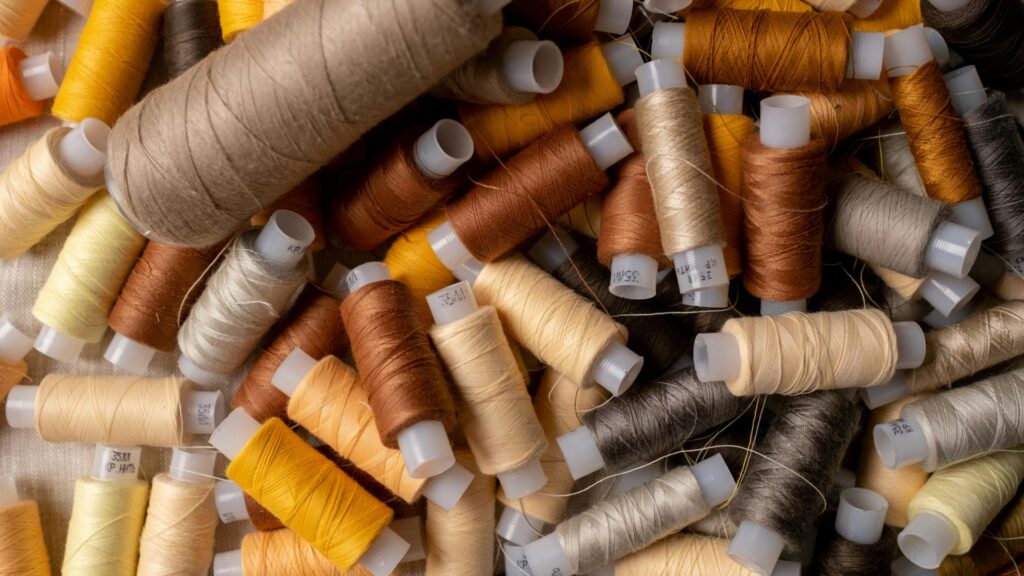
Key takeaways
- Even simple products like car mats show how material choice impacts performance, cost, and sustainability.
- Evaluating materials by one feature alone isn’t enough; businesses should consider their full lifecycle from production to end-of-life.
For businesses designing physical products, materials are not just a technical decision. They’re a strategic one. Choosing the right ingredients affects everything: from how long a product lasts to how much it costs to make and its impact on the environment.
Let’s Make It Simple: Start with a Car Mat
To simplify the idea, consider a familiar example: car mats.
Even for such an everyday item, the selection of materials makes a big difference in performance, cost, and sustainability. There isn’t a universally “better” solution: it depends on what we want the product to deliver. If the priority is a more affordable car mat, even with a shorter lifespan, one material may be more suitable. If instead the goal is long-term durability and higher resistance, another material might be the smarter choice.
Take, for example, two synthetic fibers: (PET) and Nylon 6 (PA6):
- Density: PET is denser (PET ≈1,35 g/cm3 RPET ≈1,45 g/cm3) than Nylon 6 (≈1.14 g/cm³). For equal volume, this means heavier mats, hindering the general goal of the automotive sector: weight reduction. For equal weight, Nylon 6 can offer higher quality and durability, while PET offers a more economical option, though with a shorter lifespan.
- Melting Point: Nylon 6 melts at a lower temperature (≈220°C) compared to PET (≈255°C). This difference may seem small, but it has a big impact: Nylon 6 requires less heat during heat-based processes, which translates into lower energy consumption and reduced production costs. This makes it the ideal choice for efficient technologies like Latex-Free Bonding: a hot-roll process that replaces traditional adhesives, minimizes energy demand, and delivers stronger, more responsible products.
- Durability & Lifespan: Due to its density and structure, PET tends to underperform over time, especially under stress. For instance, a PET car mat often shows significant wear and needs to be replaced sooner than a mat made from Nylon 6, which has superior mechanical properties and higher durability. The image below shows a PET car mat after just two years of typical use.

If we take sustainability into account, lower durability means more frequent replacements over a car’s lifetime from the customer’s perspective. When scaled to the number of vehicles worldwide, the environmental impact of choosing one material over another becomes significantly greater.
This simple example demonstrates how material choice can directly drive waste generation and emphasizes that product durability is a key factor in sustainability.
Evaluating the specific characteristics of each material within the context of a product, a sector, or a particular use can open up new solutions and possibilities – highlighting the potential, opportunities, or limitations that different choices may bring over the long term. A material that proves successful for one type of product may, even within the same sector, turn out to be less suitable and ultimately more costly for other applications.
It also reveals a simple truth: material decisions affect much more than a single characteristic. That’s why businesses need to go beyond one-dimensional analysis.
Choosing Materials: Consider the Entire Lifecycle
To make smarter material choices, it’s essential to look beyond a single performance metric, whether that’s strength, softness, or even price. A truly informed decision requires a full lifecycle perspective: manufacturing, use, and end-of-life.

These are the three essential questions to guide that process:
1. How is the material produced?
Every material starts with resource extraction and manufacturing processes that vary widely in energy, water and land use, and emissions. Some materials are fossil-based; others come from renewable, bio-based, regenerated or natural sources. Understanding the upstream impact, whether it’s chemical-intensive processing, deforestation, or CO₂ emissions, is critical.
2. How will it perform in real-life use?
A material’s technical performance (durability, comfort, weight, maintenance needs, cleanability, flame retardant, among many others) is critical, but so is how it interacts with people and environments. It needs to align with the functional purpose of the product, support inclusive and safe use across different contexts, and maintain its quality over time without degrading prematurely or requiring frequent replacement. Once all these conditions are met, every business should keep in mind that adopting a client-first approach is key. Our products are under constant customer scrutiny, and even a single failure can erode customer satisfaction, leading to negative brand sentiment, reduced engagement, and a drop in sales.
3. What happens at the end of life?
Disposal and recyclability are often overlooked. Some materials can be mechanically or chemically recycled into high-quality raw input again; others end up in landfill or incineration. Designing for end-of-life requires considering these factors, and many others, together. Focusing solely on recyclability, modular design, or take-back programs alone does not lead to sustainability. Instead, a combined approach that integrates multiple strategies is essential to reduce environmental impact.
Common Materials, Different Impacts
Each fiber or material comes with its own set of benefits and challenges. Here’s a snapshot of four widely used materials:

- Nylon
A synthetic fiber with exceptional durability and strength. Highly resistant to abrasion, wear, and tear, while remaining elastic, and relatively easy to clean. Ideal for carpets in high-traffic areas due to its resilience. Can be chemically recycled. It may fade with prolonged sun exposure (UV light) and can generate static electricity.
- Polyester
Synthetic fiber with good stain resistance and minimal shrinking or stretching. Generally more affordable than nylon. It is commonly recycled via thermos mechanical processes. It is less resilient than nylon, meaning it might show crushing or matting in very high-traffic areas over time. More prone to oil-based stains.
- Wool
Natural fiber that is soft, luxurious, and insulating. Naturally fire-resistant and hydrophilic, it absorbs moisture without feeling damp. It is more expensive and less mechanically strong than synthetic alternatives. Can felt, shrink or attract moths if not washed or treated properly. Requires specific care for cleaning.
- Viscose
Semi-synthetic fiber derived from wood pulp, offering a silk-like softness and luster at a much lower cost. Dyes well forvibrant colors and is breathable. It is less durable than other fibers, especially when wet, making it prone to crushing, matting, and watermarks. Less resilient and difficult to clean effectively without professional help due to its high absorbency.
How to Make Better Material Decisions
Join our upcoming webinar, “Understanding Textile Fibers: Pros, Cons, and Applications,” with Ada Ferri, Associate Professor at Politecnico di Torino since 2014. With over 20 years of experience in textile research and innovation, she will explore key material types and guide you in selecting the right fibers for your products.